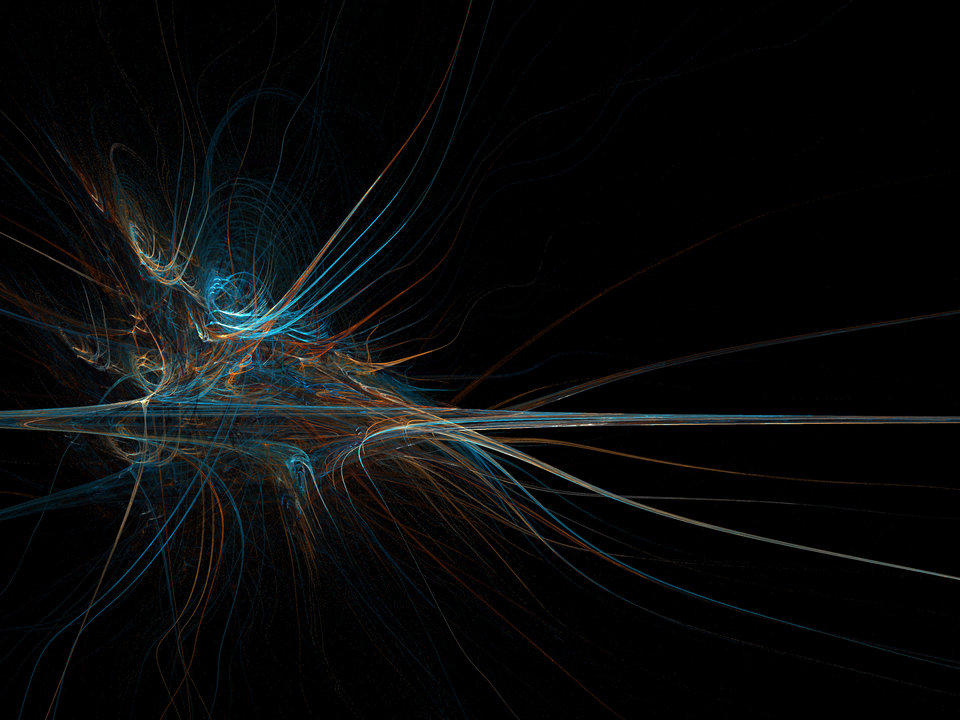In 2018, Johannes Vermeer’s world-famous Girl with a Pearl Earring underwent a total ‘body scan’: using state-of-the-art techniques, the painting was studied in painstaking detail from top to bottom. It provided a wealth of new insights about the painting and the painter. Four TU Delft faculties worked on the project.
The operation was dubbed ‘Girl in the Spotlight’. In the spring of 2018, a team of international specialists had access to the work for two whole weeks. At the initiative of the Mauritshuis museum in The Hague, they carried out in-depth research on the painting while it remained accessible to the public: separated by a glass structure, the researchers almost became part of the exhibition themselves. “It was an extraordinary period,” explains Joris Dik, Professor of Materials in Art & Archaeology. “Obviously, a painting that attracts visitors from across the world can’t just be closed off to the public, but we had plenty of opportunity to subject the Girl to the latest scanning technology using our equipment. With complete confidence in the technology, the museum gave us total freedom to make discoveries and publish about them.” This was all done under the leadership of Abbie Vandivere, paintings conservator at the Mauritshuis.
Showing thin layers in detail
The most recent scientific article explores the use of optical coherency tomography (OCT), an imaging technique similar to ultrasound, but using light rather than soundwaves. OCT is used by ophthalmologists to view the retina in detail. “OCT enables you to show thin layers in detail to a thickness of several millimetres,” explains Jeroen Kalkman, researcher in the Imaging Physics department. “That means we can also look beneath the surface of the painting and see exactly how thick certain layers of paint and glaze are.”
This was not yet possible the last time the Girl was examined in detail during restoration work in 1994. “OCT was still in the early stages of development then,” explains Kalkman. “So, it became a journey of discovery; we had no idea how well it would work or what the result would be.” Although OCT produces high-resolution images, it also has its limitations. Firstly, the size of the surface you can study: this is determined by the lens used and is therefore no larger than approximately one square centimetre. This is large enough for a retina or fingerprint, but not for whole painting. Secondly, the technique is sensitive to vibration, which prevented work from taking place in a museum full of visitors.
Four nights of scanning
Because of this, Kalkman’s doctoral candidate Tom Callewaert conducted the research over four consecutive nights, scanning the painting section by section. This resulted in a huge dataset of 881GB involving 215,000 separate files. In order to extract the right information, Kalkman and Callewaert wrote special algorithms that are now publicly accessible, together with the data. “Part of their role was to combine all of the individual scans, seamlessly connecting them together in a process known as stitching. We also had to ensure that the boundaries between the different layers matched properly and were visible,” explains Kalkman. The latter was difficult because the differences in height were often just a few micrometres and the surfaces highly irregular, for example where Vermeer used thick blobs or strokes of paint, known as impasto.
From micro- to metre-scale
The result is the world’s largest ever OCT scan so far, measuring approximately 45x40x0.2cm. “In it, we can see really small details, but also zoom out to the whole painting. That gives you more than five orders of magnitude, from millimetre scale to almost a metre.” In other words, not only multiscale imaging, but also multimodality. “We now have information about the surface, the thickness of the different layers and the way in which light is scattered.” This provides an insight into the painting’s condition as a consequence of natural ageing processing, such as the formation of craquelure (tiny cracks) or peeling.It also reveals previous restorations that are not properly visible with a conventional camera. “Of course, a restorer ensures that any repair appears attractive to the eye. From above, it appears to be smooth and reflect well, but at depth, we can identify an area of repair. This tells us that the painting was once in a much worse condition than now.”
The OCT scan also provides more insight into how Vermeer approached his work. It can be clearly seen how the artist added a green layer of glaze on top of a dark layer of charcoal to increase the absorption of light. “This transparent layer of glaze also masks the brushstrokes of the underlying layers, not only making the background appear darker, but also less obviously painted,” explains Joris Dik. When painting the face of the Girl, Vermeer used two different types of the pigment white lead, as previous research revealed. “He used the opaquer form for the light part of the face, and chose the more transparent for the shaded section. This reveal something about Vermeer as a painter. He understood the material and optical properties of his pigments and used this to achieve a convincing representation of skin. This not only involves colour, but also subtle effects, such as transparency.”
Camera obscura
The contrast between the Girl and background is further enhanced by a thick layer of impasto on the white collar. Dik: “He made the illuminated sections as convincing as possible, maximising the contrast with the background.” This enabled Vermeer to create the effect that makes the Girl such an iconic painting. “You see a girl turning round nonchalantly, stepping from total darkness into the light and looking at you,” says Dik. The effect is often compared to that of a camera obscura, the forerunner of the modern camera. Kalkman: “It looks as if the girl was standing in the spotlights, whereas her contours are quite soft. That is exactly how you would perceive it with a camera obscura.” Dik does not believe that Vermeer actually had a camera obscura in his studio, as is sometimes claimed. However, it was something that clearly influenced him: “We now know how he deliberately wanted to maximise the contrast between the foreground and background; by doing that, he was trying to approach the perspective achieved by a camera obscura.”
Visualisation
“What is the advantage for the viewer of an effect like that green layer of glaze?” Dik wondered. In order to find out, he combined analytical data from the OCT scan with information about the materials used. “Based on several samples of paint made available by the Mauritshuis, some students of mine replicated part of the canvas using exactly the same materials. We took glossy and colour photos of it and projected them onto Jeroen Kalkman’s scans,” explains Dik.
Dik and Kalkman took this combined dataset to Elmar Eisemann, Professor of Computer Graphics and Visualisation, a specialist in visualising complex datasets. He had previously worked on visualisations of work by Vermeer’s contemporary and fellow Delft resident Pieter de Hooch. With doctoral candidate Jerry Guo and graduate student Guusje Harteveld, Eisemann created a simulation that enables the Girl to be viewed with and without a glaze layer. In this simulation, you can view the painting from different angles, vary the lighting and zoom in and out. “This enables us to look over Vermeer’s shoulders, so to speak, and see the Girl as he must have done,” says Kalkman. “This is the first time that analytical information has been linked in this way to the question of what it means for the visualisation of the painting,” explains Dik. It has been made possible by an extraordinary combination of TU Delft expertise: OCT imaging and topographical scans (Applied Sciences & IDE), material knowledge (ME) and data visualisation (EEMCS). “Three amazing partners,” says Dik.
OCT is not the only method for imaging the visual characteristics of a work. Dr Willemijn van Elkhuizen (IDE) uses a 3D-scanner, a set-up involving one or more cameras and a projector. “This kind of scan provides an insight into the visual characteristics of the painting. The colour, but also the height differences on the surface, such as the blobs of paint that Vermeer used to highlight the pearl,” she explains. As part of the ‘Girl in the Spotlights’ project, she compared her method to two others: the OCT scan used by Kalkman and Callewaert and a scan done by Emilien Leonhardt (Hirox Europe) with the help of a 3D microscope. “A 3D microscope and OCT are both very good at capturing the tiniest differences in height, but only in relatively small sections, just a few mm2 in size. That’s why my 3D scanning technique is more suited for scanning more sizeable surfaces, such as larger paintings, albeit at a slightly lower resolution and with less precision.”
Tangible result
Her scanning technique also delivered a very tangible result. After some digital image processing, Elkhuizen managed to make a 3D print of the painting based on her scanning data. How close an approximation of reality is that reproduction? “The structure of a print of this kind is completely different. It’s a combination of droplets of ink, where you create a whole colour spectrum with just four colours. The human eye can’t detect the individual droplets, but does see the blended colour. That means that from normal viewing distance, you have the same experience as with the original. If you go up close or look at it through a magnifying glass, you can see how it differs from the painting,” she explains.
Reproductions like this have all kinds of potential applications. “They can be used to display paintings outside their normal context of a properly secured and climate-controlled museum.” For example, when the Mauritshuis was being renovated some years ago, the Girl with a Pearl Earring was temporarily exhibited in Japan. “A journey like that has quite an impact on the painting. Perhaps it’s better for paintings not to travel? We’ve recently become less eager to travel ourselves because of Covid-19, and things like climate change are making us reflect on how we travel. It’s increasingly becoming clear that we may no longer all be able to travel everywhere and see everything in person. So, how can we experience art in a new way?” This is the area in which Elkhuizen intends to focus her research in the years ahead.
Baseline measurement of the surface
Digital techniques such as OCT and 3D scanning can be used to record the status of a painting and register any changes over the course of time. “We now have a baseline measurement of the surface and craquelure pattern of the Girl that will serve as a useful reference for future research or restoration,” says Elkhuizen. The need for this kind of measurement became painfully clear last year during the devastating Notre- Dame de Paris fire that damaged the cathedral and its painted interior: “It made me realise that we really need to put our minds to how such information is stored. A photograph of a building or painting is not enough because it doesn’t record such aspects as the look and feel of the material.”
A long way to go
All of this will enable TU Delft research to contribute to the conservation and restoration of works like the Girl with a Pearl Earring. It also gives a new perspective on Vermeer’s working method. Dik: “We now know much more about the dramatic effect of the painting for which it is so well known worldwide. We can see that Vermeer carefully considered how he could make the optical effect as convincing as possible by making use of the properties of the pigment and structure of paint layers. That was something we did not know before, but the question is: how did Vermeer know? Where did he get these types of white lead from and how did he know how to make the background so dark? This journey of discovery still has a long way to go.”

Jeroen Kalkman

Joris Dik

Willemijn Elkhuizen
















